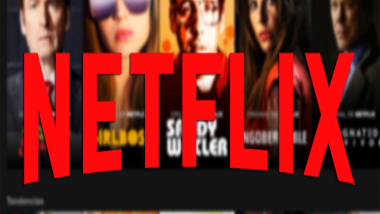Netflix just surpassed Disney to become the most valuable media company on the NASDAQ market on May 24. Share value of the online streaming giant rose more than 2% in mid-afternoon trading, pushing the firm's market value to more than $161 billion.
The shares subsequently closed up 1.3% for the day, to $349.29 per share. That gave the company a market cap of about $153 billion. Disney’s stock fell 0.7% in trading Thursday, to close at $102.11 per share, yielding a market cap of $152 billion.
In the first quarter of 2018 alone, the company has surpassed expectations for subscriber growth — there are now 125 million subscribed viewers worldwide in more than 190 countries, with people tuning in for more than 140 million hours each day, despite recent rate increases — and it reported $3.7 billion USD in revenue and $290 million USD in net income. Altogether, the numbers mean that Netflix’s market cap has exceeded other high-profile, similar media outfits such as Disney and Comcast. Netflix, founded in 1997, debuted on the stock market in 2002 as a DVD rental service with less than one million subscribers.
In 2018, Netflix plans to spend over $8 billion USD on content, and 85% of that spending will be directed towards original efforts. Subscribers can expect to find “around 1,000 original TV shows, movies, specials and other programming” — such as the new projects from the Obama family — on Netflix by the end of this year. It is also branching out into new partnerships for distribution, including with the UK's Sky.
Netflix’s growth has come at the expense of traditional cable tv subscriptions across most of North America with households with a Netflix or Hulu subscription are nearly three times as likely not to have a cable subscription than the average household.
The Bloomberg reports the cable networks for children, in decline for years, are now in a free fall due to services like Netflix. Viewership of the three most-popular networks for the very young -- Nickelodeon, the Disney Channel and the Cartoon Network -- is down more than 20 percent this season from a year earlier, according to data from Nielsen. It’s a low point in a long-running trend as Netflix Inc., YouTube and other streaming services have taken off. Meanwhile, the amount of time that the youngest watchers spent viewing conventional TV fell 30 percent between 2010 and 2017.
The video content companies like Disney are finally waking up to fight Netflix but the trend for now portends that ‘cord-cutters’ will become the norm rather than the aberration.
(The above story first appeared on LatestLY on May 25, 2018 04:26 AM IST. For more news and updates on politics, world, sports, entertainment and lifestyle, log on to our website latestly.com).













 Quickly
Quickly


